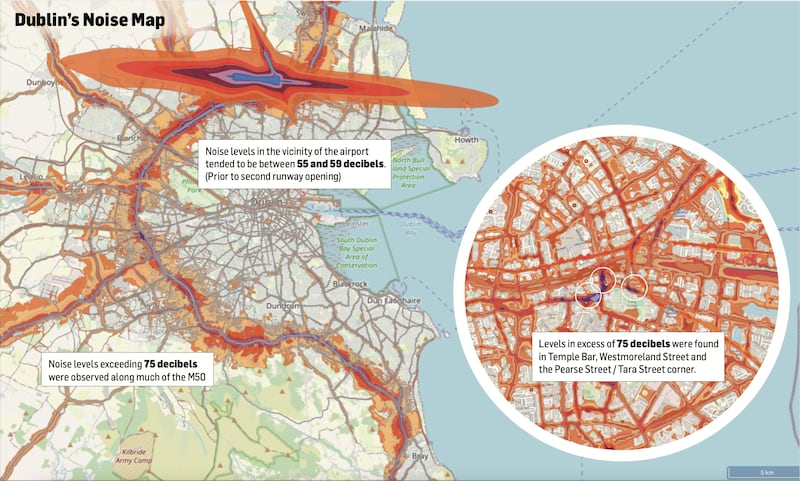Changes to regulations governing tyres, road surfaces and speed limits are among the issues being considered by local authorities to reduce noise on urban and national roads, but change is not simple and every action has a consequence.
Some people believe the growth in sales of quieter EV cars will help to solve the problem, but, in reality, EVs are quieter only when they are being driven below 40kph – above that a car’s tyres are responsible for most of the noise heard, not the engines.
The mix of tyres, speed and surfaces will feature prominently in forthcoming Noise Action Plans from the Environmental Protection Agency, but solutions are “far from simple”, the agency admitted in an interview with The Irish Times.
Studies have shown that changes to tyre treads can reduce noise but this could affect road safety And while making changes to the ingredients used in urban road surfaces could cut local noise levels, doing so on motorways could be dangerous. More research is needed.
RM Block
“Noise maps” taking in decibel levels from roads, railways and airports, where applicable, are prepared every five years and are submitted to the Environmental Protection Agency. They are followed by strategies to manage the noise, called Noise Action Plans.
In the Dublin region the Noise Action Plan 2018-2023 identifies “undesirable sound levels” as more than 55 decibels at night and more than 70 during the day.
The highest noise is found by roads, particularly the M50 and the national roads approaching it, as well as Dublin Airport and pockets of the City centre.
Noise levels exceeding 75 decibels – which may damage hearing over time – were observed along much of the M50 from the M11 to the M1, as well as along many of the main approach roads including the M11, the M7 (Red Cow), the M4 and M2.

An interactive version of the EPA’s noise map can be viewed here
Noise levels in the vicinity of the airport tended to be lower, at between 55 and 59 decibels. However, the EPA said the map on which this was based predated the opening of the second runway. A management plan is being prepared by Fingal County Council in relation to the airport.
High noise levels were also found in Temple Bar, Westmoreland Street and the Pearse Street/Tara Street corner, where levels were cited as being in excess of 75 decibels.
Noise levels in the vicinity of the Luas lines were as low as 55 decibels. Higher values of up to 69 decibels were found in areas adjacent to big roads. A similar situation was found along the Dart line.
[ The growing menace of annoying sounds that affect our healthOpens in new window ]
Mitigation measures outlined by Dublin City Council mention “traffic avoidance plans that combine walking, cycling and public transport” as well as “speed reduction plans involving partial access zones, smoothing traffic flows and reducing driving speeds” and “traffic flow relocation ie diverting traffic along non-residential, less sensitive routes”.
Dún Laoghaire Rathdown Council has “progressed two priority actions”. Its “numerous pedestrian and cycle priority measures” have “the effect of reducing the volume of noise-creating car traffic generally”, the council said. The second measure has been to renew the carriageway surface of the N11 and N31 in association with Transport Infrastructure Ireland.
A spokesman for the EPA said speed, tyres and road surface would be among the most prominent considerations in forthcoming Noise Action Plans. However, he said noise mitigation was “far from simple”. He said studies had shown a reduction in tyre treads could reduce noise but there was a danger in terms of road safety. While there may be some scope for changing road surface composition in urban settings, on motorways at higher speed limits this could potentially be dangerous. He said more research was needed.
Transport Infrastructure Ireland said replacing some road surfaces, particularly in urban centres, would result in the newer surfaces requiring more frequent replacement, which would create more carbon emissions. The spokesman agreed the issue of noise was complex, as lower speeds with consequent gear changes could give rise to higher emissions.



















